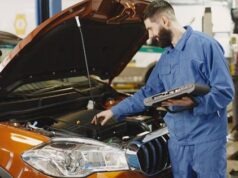As tires are the points of contact between the vehicle and the road, we can’t stress enough how important they are to any vehicle. That being said, tire care and maintenance are a must for motorists. Follow these tips to save your tires and money. You could probably save lives, too!


1. Maintain Proper Inflation
This is probably the most basic yet often neglected aspect of tire maintenance. Many people assume that as long as a tire isn’t flat, it’s still okay. This is something you can’t leave to chance, as a tire that is underinflated or overinflated is prone to a blowout. Statistics show that over 11,000 accidents happen each year because of tire blowouts.
Make it a habit to check the tire pressure every two weeks, especially if you will head out on a long drive or carry heavier loads than usual. Refer to your vehicle’s manual or information placard (usually found on the jamb of the driver’s side door) for the recommended tire pressure levels. For most passenger cars, it is usually advised to maintain 32 to 35 PSI of air in the tires.
Use a high-quality stick, dial, or digital tire pressure gauge to check PSI levels. If your car has a direct tire pressure monitoring system onboard, you can conveniently check the tire pressure even when you are inside the vehicle.
2. Inspect Tires Regularly
As you check the tire pressure, do a visual inspection of the tires as well. Watch out for any or all of the following:
- Bulges on the sidewall
- Debris or other objects stuck in the tire
- Punctures or cracks
- Uneven tread wear
Punctures and cracks on the tire tread can still be repaired. However, if the sidewall is punctured or has bulges on it, you need to replace the tire. The same applies if the uneven tread wear is severe.
3. If Tire Repair Is Needed, Have It Done Professionally
Sure, tire plugs and other tire repair kits are widely available, but those are temporary fixes only. They are only meant to get your tire/s back to working condition long enough to reach the nearest tire repair shop.
A professional tire repair shop has all the tools and supplies needed to repair your tire/s properly, as well as qualified technicians to do it. They can also tell you if your tires are still worth fixing or if they need replacement.
4. Have Your Wheels Aligned Periodically
The alignment of your wheels can go slightly off over time as you hit speed bumps, potholes, and curbs. Misaligned wheels cause premature or uneven tread wear.
Tire care experts recommend getting wheel alignment every year or every 6,000 miles. This optimizes tire traction, longevity, and ride quality. When you bring in your car for wheel alignment, most likely, the tire technician will also recommend you to…
5. Have Your Tires Balanced
Tire balancing corrects weight imbalances on the tire and wheel assemblies. This prevents premature and uneven tread wear. It also improves safety and ride quality.
6. “Rotate” the Tires
Tire rotation means switching or changing the position of the tires periodically.
This spreads the wear evenly among the four tires, maintaining uniform tread depth. Evenly worn tires maintain a good grip, making your car’s handling consistent. Doing this extends your tires’ lifespan, too.
7. Replace Tires As Needed
As tire treads get thinner with use, the time will come when you’ll need to replace your tires. If a tire gets severely damaged, you need to replace it even if it still has enough tread depth.
To check the tread depth, check the wear indicator bars. These are tiny, raised bars found within the grooves of the tire. Another method to assess tread life is the “penny test”. Here is how to do it:
- Get a clean penny.
- With Abraham Lincoln’s head upside down, place the penny into the tire groove.
- If the top part of Lincoln’s head is still covered, you still have enough tread depth.
- If you can see the entirety of Lincoln’s head, it’s time to replace the tire.
8. Replace All Four Tires at Once
While changing just one tire at a time costs less upfront, this might cause you to spend more in the long run. Mismatched tires can lead to fast or uneven tread wear and may also compromise your car’s drivetrain and suspension. It is always best to change all four tires at the same time to maintain consistency. Depending on the circumstances, it is also acceptable to change tires in pairs at least.
9. Put On Tires Designed for the Season
If you live within the “Snowbelt” area in the U.S., you need to have a set of winter tires to use when it snows. Such tires are made of rubber compounds that remain flexible even under extreme cold. This flexibility, along with specially designed tread patterns, provides grip on snow and ice.
If you are in the “Sun Belt” area, summer tires are recommended. They are optimized for dry and wet conditions during the summer months. All-season tires are also fine, but may not have as much grip as summer tires when the weather gets hot.
Putting on the type of tires appropriate for the season improves your car’s handling and safety. It also prevents premature tread wear, prolonging the service life of your tires.
10. Take Care of Spare Tires, Too!
Keep your spare tires away from excessive moisture and direct sunlight. Don’t expose them to oil and solvents as these substances can cause the rubber to deteriorate.
Bonus Tip: Adjust Driving Techniques To Preserve Tires
Avoid overspeeding, especially when cornering to prevent heat buildup and premature tread wear. Be mindful of potholes, bumps, and debris on the road to mitigate the risk of tire damage.









